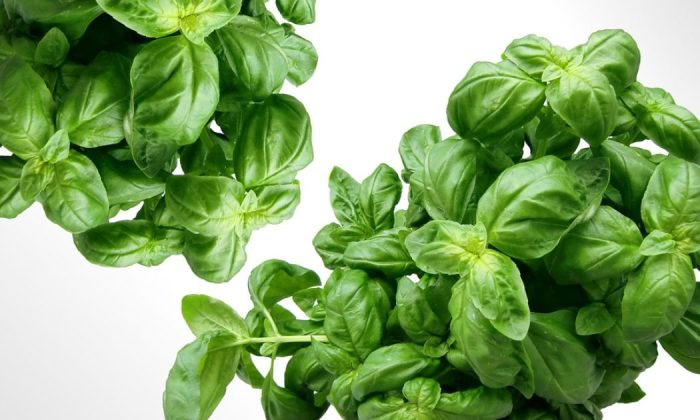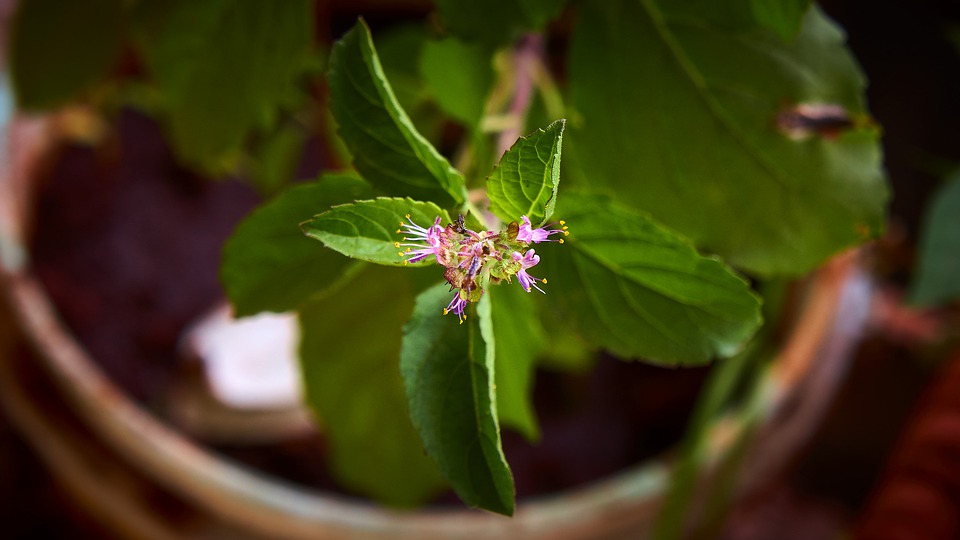Dragon repellent? Common and less known types of basil

Basil comes from India. Well, most likely. During the wars of Alexander the Great, basil was brought to Greece, and from there it found its way to other Mediterranean countries. Basil is grown in warm regions and in subtropical countries all over the world, but in Europe, it is grown mainly in Mediterranean countries and, on a smaller scale, in Ukraine, Hungary, Bulgaria, Czech Republic, Slovakia, Germany and Poland. It no longer occurs in the wild…
Basil myths
In the Middle Ages, people believed that basil is able to ward off dragons, beasts and other monsters, but in certain parts of Europe basil was associated with death. So, go figure. For example, if you had a dream about basil than you were in for a bad luck. On the other hand, basil was very popular mainly with young women who wanted to get married and so they wore basil in their hair. The French see basil as the royal herb, and people in Portugal give basil in a flowerpot on religious holidays to their loved ones. Obviously, basil is used mainly in the kitchen, but also as in pharmaceutical and beauty products. It offers the typical slightly sweet, spicy taste and a mint-anise aroma. It is added to various foods to enrich taste and aroma.
Photo: Pixabay
Types of basil
There are many types of basil. Depending on the species, the taste and colour of leaves varies. There are about 200 different species we know about. The most popular variety is (Ocimum basilicum), but you can also find other varieties.
- Red basil (Ocimum basilicum ‘Purpurascens’). This type of basil is reddish and offers a sweet, slightly spicy taste. It is often served with pasta and fresh tomatoes. There is a lesser-known dish called Pesto Trapani, which consists of cherry tomatoes, pine nuts, ricotta, garlic and almonds, and of course, it is very tasty.
- Thai basil (Ocimum basilicum var. thyrsiflora). This type of basil is popular in Thailand, Cambodia and Vietnam. It has a slightly sweet taste with a spicy aftertaste of anise and liquorice. It offers an intense anise aroma with citrus notes and it is usually added to dishes such as: pad thai, tom kha gai or the popular pho soup to enhance taste and aroma.
- Greek basil (Basil ocimumvar minimum ‘Greek’). This basil has delicate leaves and a delicate fragrance and it is widely used in Mediterranean cuisine in dishes such as pizza, pesto and gazpacho.
- Cinnamon basil (Ocimum basilicum ‘Cinamonette’). As the name suggests, this basil aroma resembles cinnamon and it is therefore often used in cakes and desserts.
Preview photo: Pixabay

Gardening is my hobby, I have a lot of experience and I am happy to share it.









0 comments